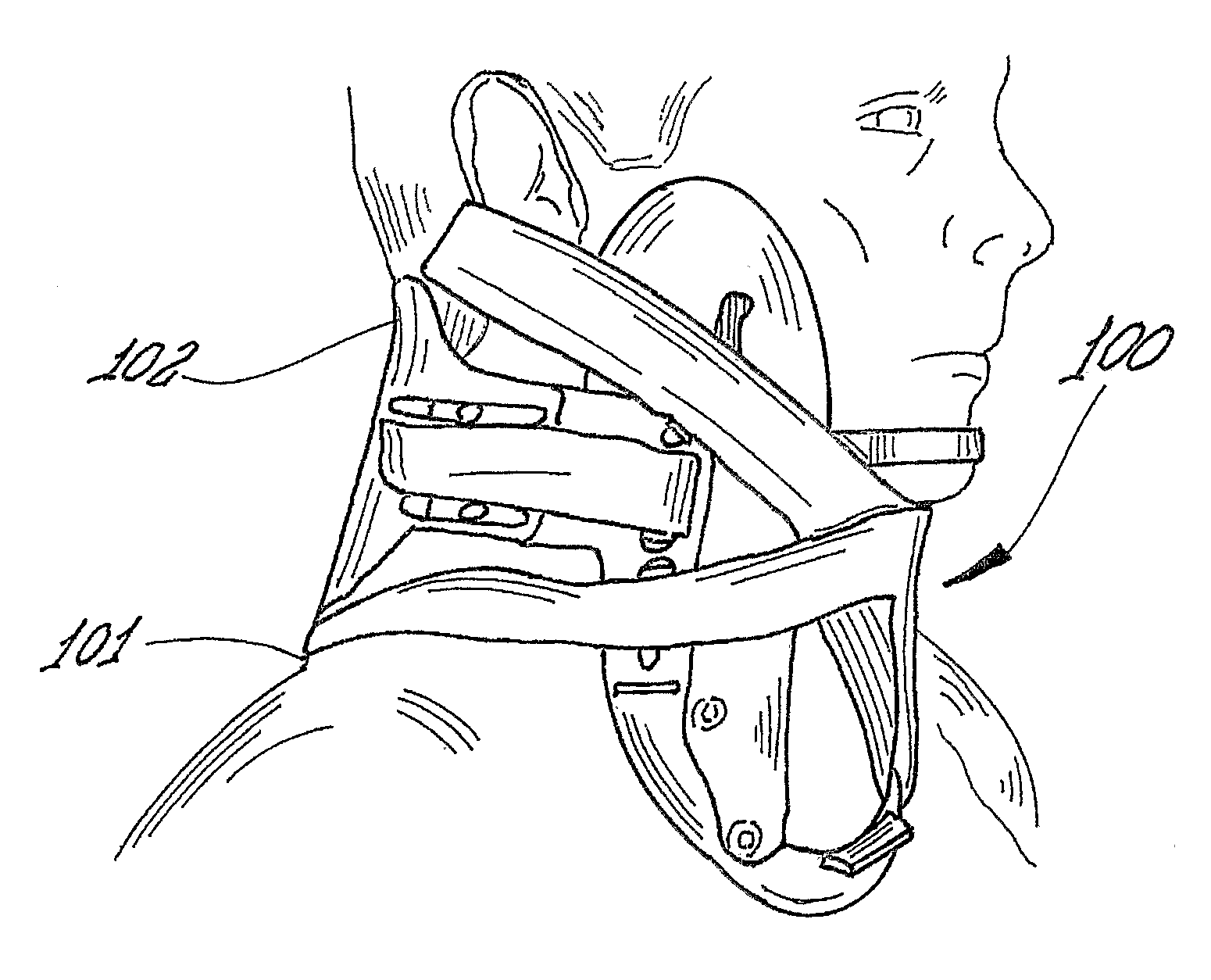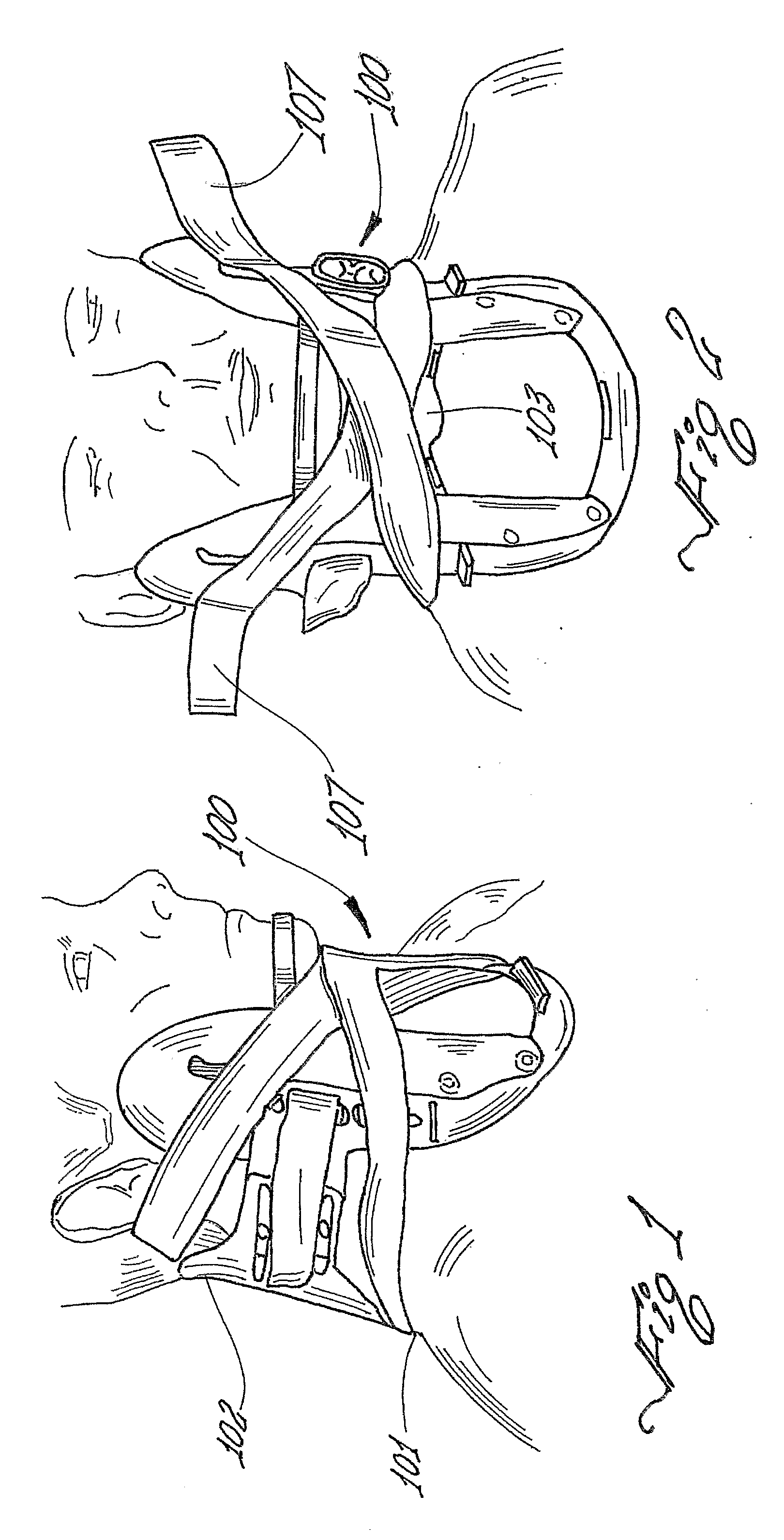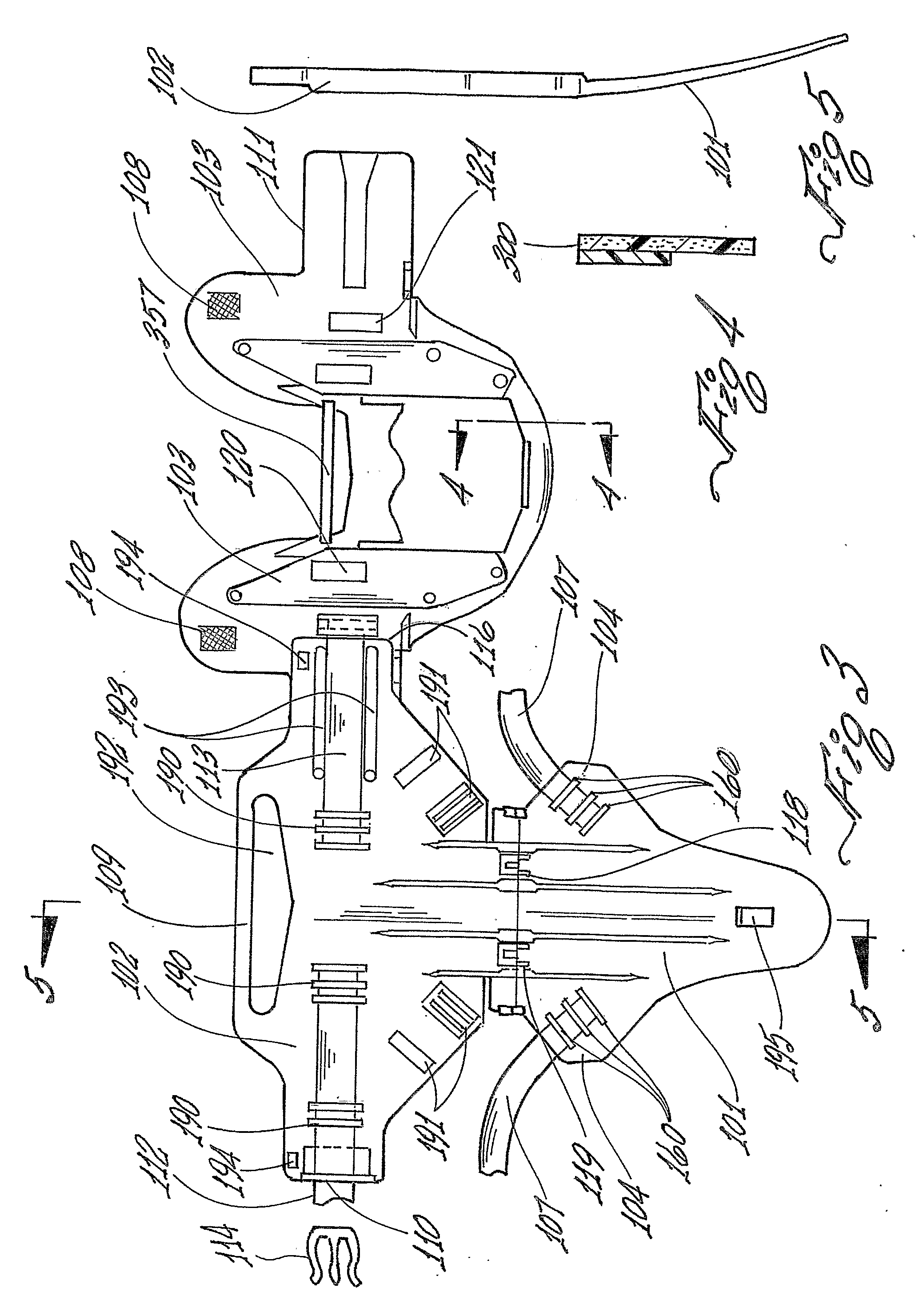Custom Fit Cervical Collar
a cervical collar, custom-fit technology, applied in the field of cervical collars, can solve the problems of exacerbate existing injuries, no cervical collar suitable for use in emergency situations which is sufficiently immobilizing the head, neck and spinal cord, and may cause serious and debilitating injuries, etc., to achieve tighter and more form-fitting collars, the effect of increasing the immobilization of the wearer's head and neck
- Summary
- Abstract
- Description
- Claims
- Application Information
AI Technical Summary
Benefits of technology
Problems solved by technology
Method used
Image
Examples
Embodiment Construction
[0033]According to a preferred embodiment of the present invention, an article of manufacture is used for the immobilization of the cervical region of an injury victim by rescuers. The article of manufacture will be explained in enabling detail below.
[0034]It should be noted here some terms which will be used hereafter. The terms “patient” and “victim” refer to the person upon which the cervical collar is fitted. Although the word “victim” typically connotes someone who has befallen a crime or a serious accident, the present invention may be used in circumstances where there has not been a serious accident or a crime.
[0035]FIGS. 1 and 2 are perspective views of the preferred embodiment of the present invention. The present invention can be described as having three discernable regions. The preferred embodiment includes a spinal support region 101, an occipital support region 102 and a neck support region 103. Notwithstanding the fact there are three discernable regions, it is unders...
PUM
 Login to View More
Login to View More Abstract
Description
Claims
Application Information
 Login to View More
Login to View More - R&D
- Intellectual Property
- Life Sciences
- Materials
- Tech Scout
- Unparalleled Data Quality
- Higher Quality Content
- 60% Fewer Hallucinations
Browse by: Latest US Patents, China's latest patents, Technical Efficacy Thesaurus, Application Domain, Technology Topic, Popular Technical Reports.
© 2025 PatSnap. All rights reserved.Legal|Privacy policy|Modern Slavery Act Transparency Statement|Sitemap|About US| Contact US: help@patsnap.com



